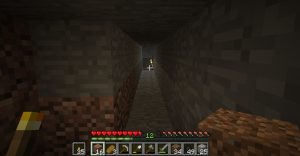We Might Finally Know What Season The Dinosaurs Died In

It is widely believed that dinosaurs became extinct following an asteroid impact on earth about 65 million years ago, but new research has now pinpointed the exact season when that strike happened. Dinosaurs went extinct at the end of the Cretaceous Period after living on the earth for about 165 million years. The precise nature of the event is still under debate, although evidence suggests that a catastrophic asteroid impact was the main reason.
The massive 12-kilometer-wide asteroid that rendered dinosaurs extinct is believed to have hit Mexico’s Yucatan peninsula. The impact killed off not only dinosaurs but nearly three-quarters of all species on earth, including the meat-eating reptiles that dominated the seas. Birds were the only dinosaurs to survive the mass extinction, alongside mammals, crocodiles, turtles and other groups that filled the eco-system gaps in the subsequent periods.
According to new research, the asteroid impact happened during springtime in the northern hemisphere. The study, which was conducted by researchers from Uppsala University in Sweden, Vrije Universiteit (VU) in Amsterdam, Vrije Universiteit in Brussels (VUB), and the European Synchrotron Radiation Facility (ESRF) in France, is based on the fossils of paddlefishes and sturgeons discovered in Tanis, North Dakota. The research further suggests that the fishes were buried alive by sediments following the impact, while huge waves of water buried land creatures alive. Furthermore, most of the catastrophic after-effects reportedly happened within an hour of the impact, killing off the creatures almost instantaneously.
Evidence For A Springtime Impact

According to the researchers, multiple pieces of evidence suggest a springtime impact. The first indicator is the yearly growth rings in fish bones which, like those in tree trunks, showed increased growth during spring following reduced growth during winter. Secondly, chemical evidence from paddlefishes showed that food availability was growing at the time of their death, which again points to a springtime impact. Finally, to prove their point, the researchers subjected one of the paddlefish fossils to stable carbon isotope analysis, revealing that the spring feeding season was still in full swing when death came.
As for what saved some of the creatures while others went extinct, the researchers believed that the timing of the impact could have played a key role in that. According to them, creatures in the southern hemisphere were largely saved as the impact happened during the southern-hemisphere autumn when they were preparing for the onset of winter. Lead author Melanie During from Uppsala University and the VU Amsterdam believes that the findings of the latest study will help uncover “why most of the dinosaurs died out while birds and early mammals managed to evade extinction.”
Source: Nature

















